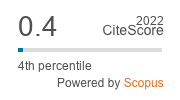Secondary metabolites of Musa cultivars confer resistance against infestation by stem weevil, Odoiporus longicollis (Olivier) (Coleoptera: Dryophthoridae)
Keywords:
Odoiporus longicollis, Musa cultivar Yangambi, resistance, secondary metabolitesAbstract
Banana, popularly known in Kerala as Nendran has diverse cultivars of indigenous and exotic or hybrid types. All Nendran cultivars are highly susceptible to infestation by Odoiporus longicollis Olivier (Coleoptera: Dryophthoridae), and they possess very low content of secondary metabolites (SM) such as total phenols (TP) and total flavonoids (TF). Activities of enzymes related to the synthesis of SM such as Phenylalanine Ammonia Lyase (PAL), Polyphenol Oxidase (PPO) and Peroxidase (PO) showed very low activity in Nendran cultivars and this may be one of the reasons for their susceptibility to infestation by O. longicollis. Yangambi, a Musa cultivar which is resistant to infestation by O. longicollis possessed very high content of TP, TF and elevated activity of PAL, PPO and PO. Under field condition, cultivar Yangambi did not show any symptoms of attack by this pest and rearing of larvae of O. longicollis in Yangambi resulted mortality within one week and wide spread cytopathological changes in the hemocytes and enzymatic changes in the hemolymph. Hemocytopaenia together with selective enhancement in the population of granulocytes and selective decrease in the population of plasmatocytes were observed in differential count. Cytopathological changes such as lack of cell membrane integrity, lack of nuclear membrane integrity and degeneration of cytoplasm was observed in hemocytes of larvae maintained in Yangambi. Intoxicated larvae showed sharp decrease in the contents of Trehalose through the elevated activity of Trehalase. Significant elevation of fat body glycogen and inhibition of glycogen phosphorylase was also observed in affected larvae. Sharp elevation of lactic acid through elevated activity of lactic acid dehydrogenase and inability to utilize glucose are other adverse effects caused by this pest resistant cultivar on the pest. Even though Yangambi is not a commercially viable Musa cultivar, the conservation of such cultivars is very much essential for knowing the molecular mechanism of pest resistance, which may help in the management of O. longicollis in an eco-friendly way.


